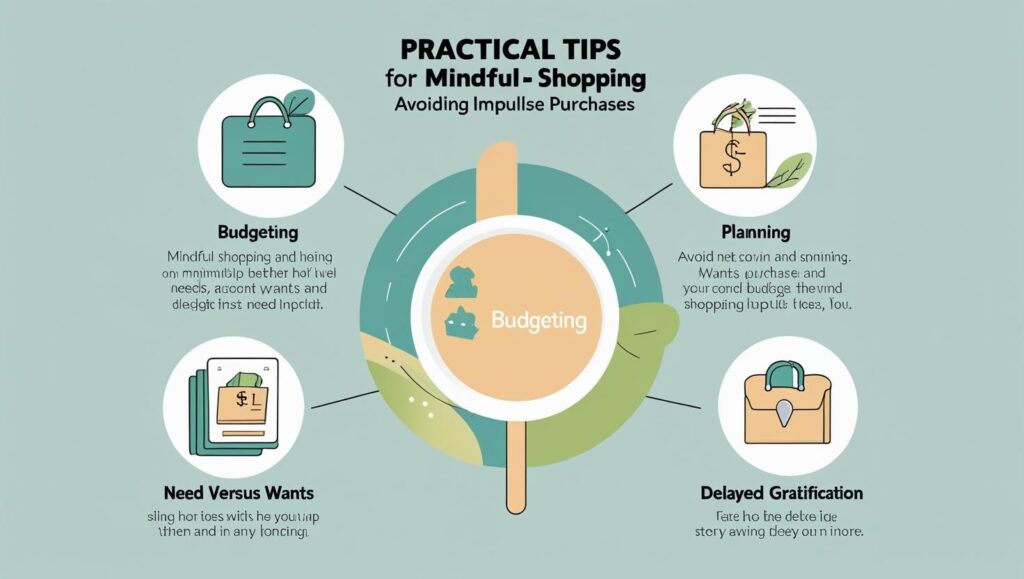Ever found yourself staring at a shopping bag full of things you don’t really need, wondering how they got there? We’ve all been there. The thrill of a new purchase can be incredibly alluring, but it’s often fleeting, leaving a trail of buyer’s remorse and a lighter wallet. In a world of endless sales, targeted ads, and one-click purchasing, learning how to avoid impulse buying is more important than ever. This guide will help you reclaim control of your spending habits and embrace a more intentional, mindful approach to shopping that benefits both your finances and your peace of mind. Let’s dive in and transform your relationship with money and consumerism.
Understanding the Psychology of Impulse Buying
Before we can stop a habit, we need to understand what fuels it. Impulse buying isn’t just about a lack of self-control; it’s often an emotional response. It can be triggered by a desire for instant gratification, a need to cope with stress or boredom, or even a reaction to cleverly designed marketing tactics. Retailers use psychological tricks—like limited-time offers, “you may also like” suggestions, and appealing store layouts—to encourage spontaneous purchases. Recognizing these triggers is the first step toward building a defense against them. Think of it as knowing the enemy before you enter the battle.
Recognizing Your Personal Triggers
What makes you most vulnerable to impulse buys? Is it a bad day at work, a late-night scroll through social media, or the feeling of FOMO (fear of missing out)? Pay attention to the situations and emotions that typically precede your unplanned purchases. Journaling about your spending can be a powerful tool here. Write down what you bought, why you bought it, and how you felt at that moment. Over time, you’ll start to see patterns emerge. This self-awareness is your superpower in the fight against mindless spending.
Practical Strategies to Stop Impulse Purchases
Armed with self-awareness, you can now implement practical strategies to change your habits. These aren’t about depriving yourself; they’re about empowering you to make choices that truly serve your goals and values. Mindful shopping is about asking, “Do I really need this? Does it add value to my life?” instead of just grabbing and going. Let’s explore some actionable steps you can take today.
1. Create a “Shopping Time-Out” Rule
The single most effective way to combat impulse buying is to introduce a delay. When you see something you want, don’t buy it immediately. Instead, add it to your cart or a wishlist and walk away for at least 24 hours. During this “shopping time-out,” you can assess if the item is a genuine need or just a fleeting desire. Often, after a day passes, the initial urge fades, and you realize you don’t need the item after all. This simple pause gives your rational brain a chance to catch up with your emotional one.
2. Make a List and Stick to It
Whether you’re heading to the grocery store or shopping online for clothes, a pre-planned list is your best friend. Make a detailed list of what you need and commit to only buying what’s on it. This simple act of planning forces you to be intentional about your purchases before you’re in a situation filled with temptation. For online shopping, having a list helps you avoid getting sidetracked by recommended products and pop-up ads.
3. Unsubscribe and Unfollow
A huge source of temptation comes from our inboxes and social media feeds. Those daily “Flash Sale!” emails and sponsored posts are designed to make you feel like you’re missing out if you don’t buy right now. Take a moment to unsubscribe from retail newsletters and unfollow brands that constantly tempt you. This act of digital decluttering creates a cleaner, less tempting environment and reduces the constant stream of messages telling you to spend.
Mastering the Art of Mindful Shopping
Mindful shopping is about more than just avoiding bad habits; it’s about building good ones. It’s about being present and intentional with every purchase. It’s a practice that deepens your understanding of your own values and how your spending aligns with them. Here are some advanced tips to elevate your shopping game.
4. Understand the Cost Per Use
Instead of thinking about the upfront cost of an item, consider its **cost per use**. A high-quality pair of boots that costs $200 but lasts for 10 years and is worn frequently has a much lower cost per use than a trendy pair of shoes that costs $50 but falls apart after a few wears. This shifts your focus from the immediate price to the long-term value and sustainability of a purchase. This mindset encourages investing in quality over quantity, which is a key tenet of mindful consumerism.
5. Use the “One-In, One-Out” Rule
This rule is a great way to prevent clutter and overconsumption. For every new item you bring into your home, you must get rid of an old one. This makes you seriously consider whether you have space and a real need for the new item. It forces you to evaluate its value against something you already own, often leading you to decide against the purchase. It’s a simple yet effective way to maintain a minimalist, intentional living space.
6. Shift Your Focus from Buying to Experiences
A common reason for impulse buying is the search for a happiness boost. However, studies show that spending money on experiences—like travel, concerts, or a special dinner—brings more lasting happiness than buying material goods. Challenge yourself to shift your spending from “things” to “doing.” You’ll create memories that last a lifetime, far surpassing the temporary satisfaction of a new gadget or outfit.
A Simple Comparison of Impulsive vs. Mindful Shopping
To really drive home the difference, let’s look at a simple comparison. This table outlines the core characteristics of each approach, helping you visualize the shift you’re trying to make.
| Characteristic | Impulsive Shopping | Mindful Shopping |
|---|---|---|
| **Motivation** | Emotional (e.g., boredom, stress, excitement) | Rational and Value-Based |
| **Timing** | Spontaneous, spur-of-the-moment decisions | Planned and considered |
| **Focus** | Quantity, trends, immediate gratification | Quality, longevity, long-term value |
| **Feeling After Purchase** | Often leads to buyer’s remorse and guilt | Satisfaction and confidence |
By shifting your habits from the left column to the right, you’ll not only save money but also feel more in control of your life. This change isn’t about rigid restrictions; it’s about finding a greater sense of purpose and joy in what you already have and what you truly need.
Ultimately, learning how to avoid impulse buying is a journey toward a more intentional life. It’s about making conscious choices that reflect your true values, not just reacting to external triggers. By implementing these strategies, you can transform your relationship with spending from one of impulsive reaction to one of thoughtful action. Start small, be patient with yourself, and celebrate every time you make a mindful choice. Your future self—and your bank account—will thank you for it. For more tips on managing your finances and achieving your goals, be sure to explore our other resources on personal finance and budgeting.



